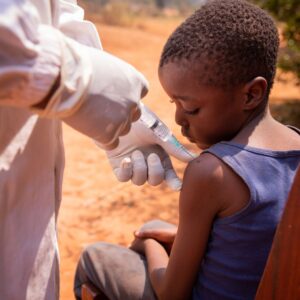Child malnutrition remains a leading cause of illness and death among children in Kenya, contributing to nearly half of global under-five fatalities. Malnourished children often exhibit severe weight loss and swelling in the ankles and feet. Acute malnutrition, driven by insufficient food and infectious diseases like diarrhoea, weakens the immune system, making children more vulnerable to illnesses such as pneumonia and increasing the risk of death.
Currently, Kenya’s national response to malnutrition relies on historical trends, assuming that patterns of past malnutrition will repeat in similar months. This approach has limited accuracy as it does not incorporate predictive statistical modelling. While the Ministry of Health has collected monthly nutrition and health data for years, it has not yet been fully leveraged to forecast malnutrition risk.
A multi-disciplinary team developed a machine learning model to predict acute malnutrition in Kenyan children up to six months in advance. The model uses clinical data from health facilities, including diarrhoea treatment and low birth weight, alongside satellite-based crop health indicators to enhance predictive accuracy. This approach enables better identification of high-risk areas before malnutrition peaks.
Testing data from January 2019 to February 2024 showed that the gradient boosting machine learning model performed best, accurately forecasting malnutrition prevalence with 89% accuracy. It proved particularly effective in high-risk regions such as northern and eastern Kenya, which experience dry climates, while outperforming historical trend-based forecasts in lower-prevalence regions like western and central Kenya. The models’ success lies in their ability to integrate multiple clinical and environmental indicators to identify complex patterns.
The implications of these findings are significant. Unlike current methods that rely solely on historical patterns, machine learning forecasts can guide resource allocation to areas of highest need, saving lives and supporting children’s physical and psychological development. Early interventions informed by accurate forecasts could prevent malnutrition before it becomes critical.
To translate these insights into actionable decision-making, a prototype dashboard has been developed to visualize subcounty-level forecasts. The dashboard, updated regularly with new data, is being refined in collaboration with the Kenyan Ministry of Health and Amref Health Africa to ensure local stakeholders can effectively use it for planning interventions. Strengthening local capacity to manage and utilize the model and dashboard will promote sustainability, ownership, and more responsive strategies to combat child malnutrition in Kenya.







